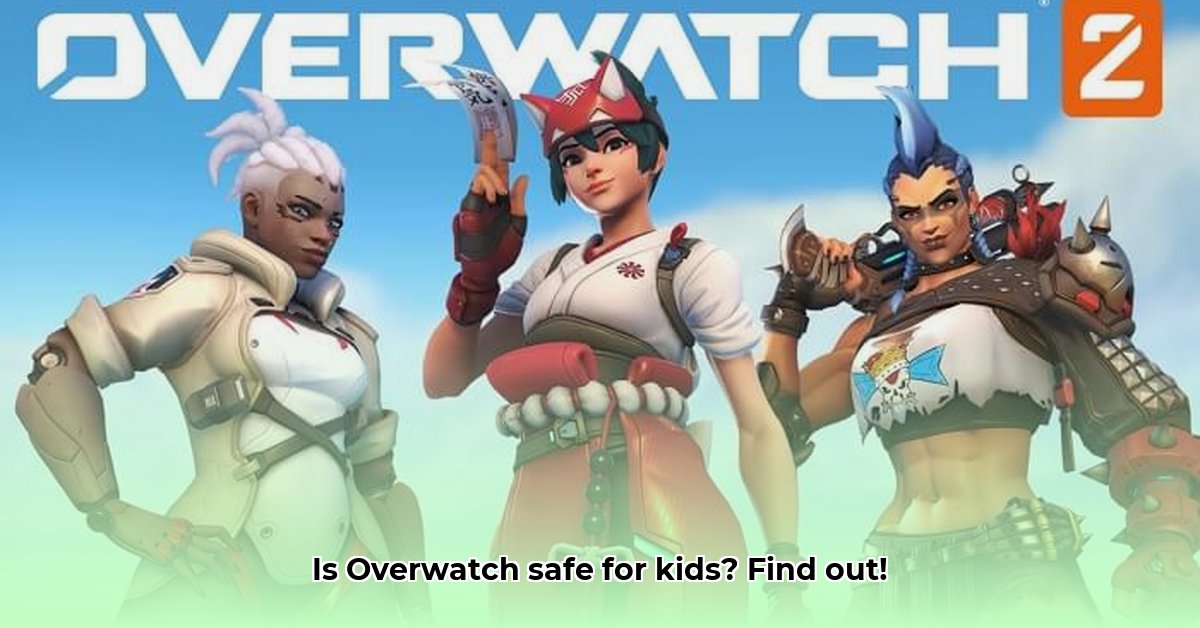
Is Overwatch safe for your kids? It's a question many parents ask, and the answer isn't a simple yes or no. It depends on how you manage the risks associated with online gaming. This guide provides actionable steps to ensure a positive and safe Overwatch experience for your children.
Age Appropriateness and Content
Overwatch holds a Teen rating (ESRB) for ages 13+, indicating cartoonish violence and some suggestive humor. However, the online multiplayer aspect introduces significant risks. While the violence is stylized, the potential for exposure to inappropriate language and online harassment is a significant factor to consider. Remember, the ESRB rating focuses on the content itself, not the social dynamics of online play.
The Online World: Potential Risks and Mitigation
Online multiplayer games like Overwatch present the potential for negative interactions, including:
- Toxic behavior: Rude language, harassment, and cyberbullying unfortunately occur in online communities.
- Exposure to inappropriate content: Players may encounter offensive language or imagery via chat, or even through player names.
- Unwanted contact: Children might encounter players attempting to make contact outside of the game.
What to Do:
- Establish open communication: Talk to your child before they play, setting clear expectations regarding online behavior and reporting mechanisms. Emphasize the importance of reporting any negative encounters.
- Create a safe space for discussion: Make it easy for your child to talk to you about their experiences, both positive and negative. Encourage them to share concerns without fear of judgment.
- Monitor their activity: While complete monitoring might not be feasible, occasional checks can help identify potential problems early.
Parental Controls: Your Essential Toolkit
Parental control apps and features built into game platforms are valuable tools for managing your child's online gaming experience.
Actionable Steps:
- Explore parental control options: Several apps offer robust features like playtime limits, content filtering, and communication monitoring across multiple devices. Research and choose the best fit for your family.
- Utilize Battle.net's parental controls: Blizzard's Battle.net platform offers controls for playtime limits, communication restrictions (voice and text chat), and in-game spending limits. Actively utilize these features.
- Regularly review and adjust settings: As your child matures and their understanding of online safety grows, revisit and adjust your parental controls accordingly.
Technical Concerns and Solutions
While not a widespread issue, some players have reported GPU (graphics processing unit) problems while playing Overwatch. This is often linked to older hardware or outdated drivers. To mitigate this:
- Monitor computer temperature: Ensure your child's computer has adequate cooling to prevent overheating, particularly during extended play sessions.
- Update graphics drivers: Regularly update the graphics card drivers to resolve potential compatibility issues and optimize performance. This reduces the likelihood of technical glitches.
A Family Action Plan for Safe Gaming
This table summarizes short-term and long-term strategies for parents, children, and game developers:
| Stakeholder | Short-Term Actions | Long-Term Actions |
|---|---|---|
| Parents | Set daily time limits, monitor online interactions, use parental controls | Keep communication open, stay updated on game changes, regularly review online safety habits. |
| Child (13+) | Report inappropriate behavior immediately, follow community rules | Develop critical thinking skills and understand online risks. |
| Game Developers | Continue improving safety features and reporting systems | Maintain proactive improvements to safety tools and promote responsible gaming. |
Key Takeaways: Balancing Fun and Safety
Overwatch offers engaging gameplay, but online interaction necessitates proactive safety measures. By implementing strategies focused on communication, parental supervision, and leveraging available tools, you can significantly reduce potential risks and provide your children with a positive and safe gaming experience. Remember, the key is a proactive and ongoing dialogue between you and your child, coupled with the effective use of parental controls.